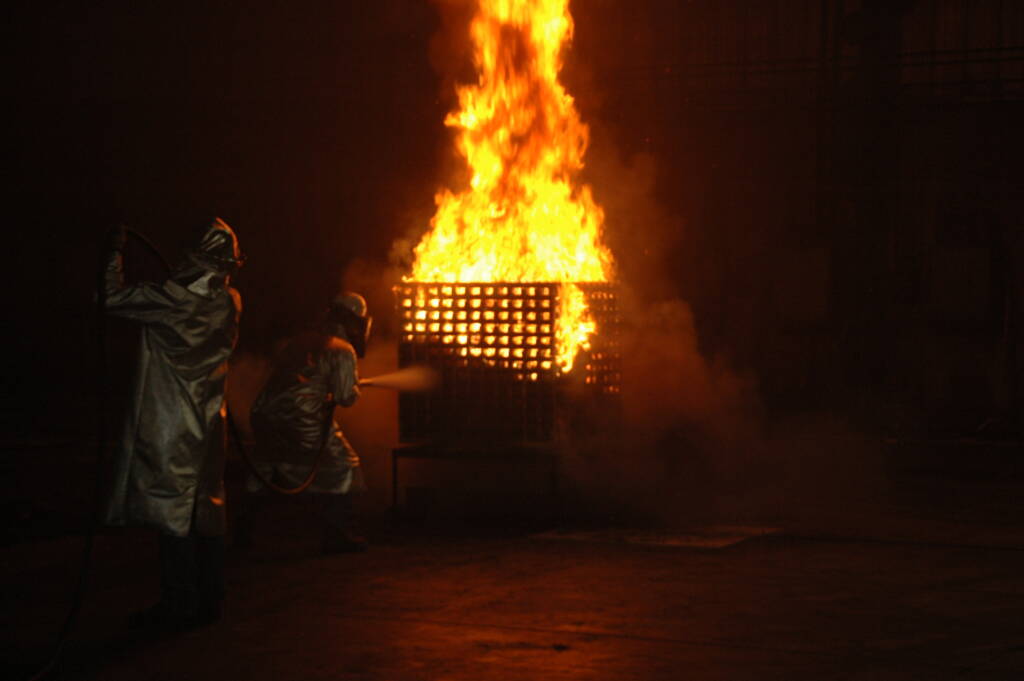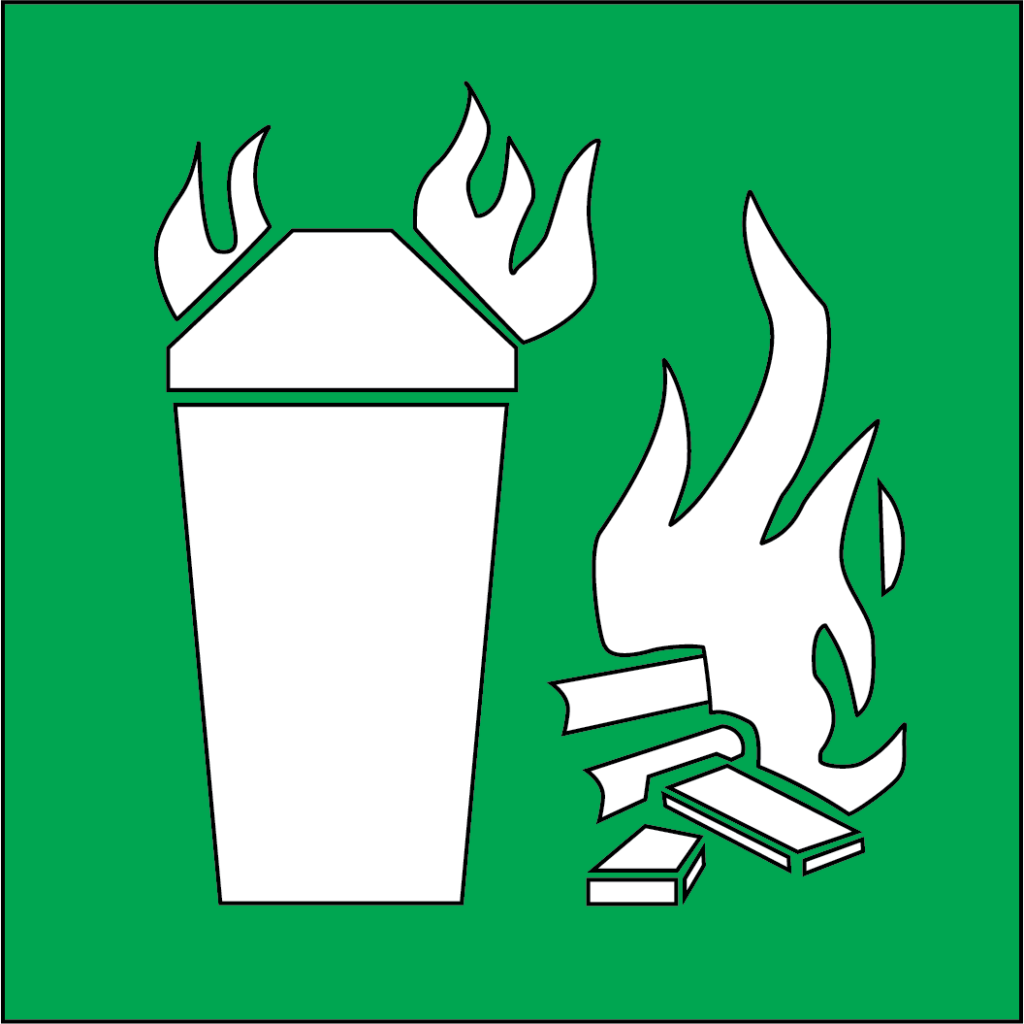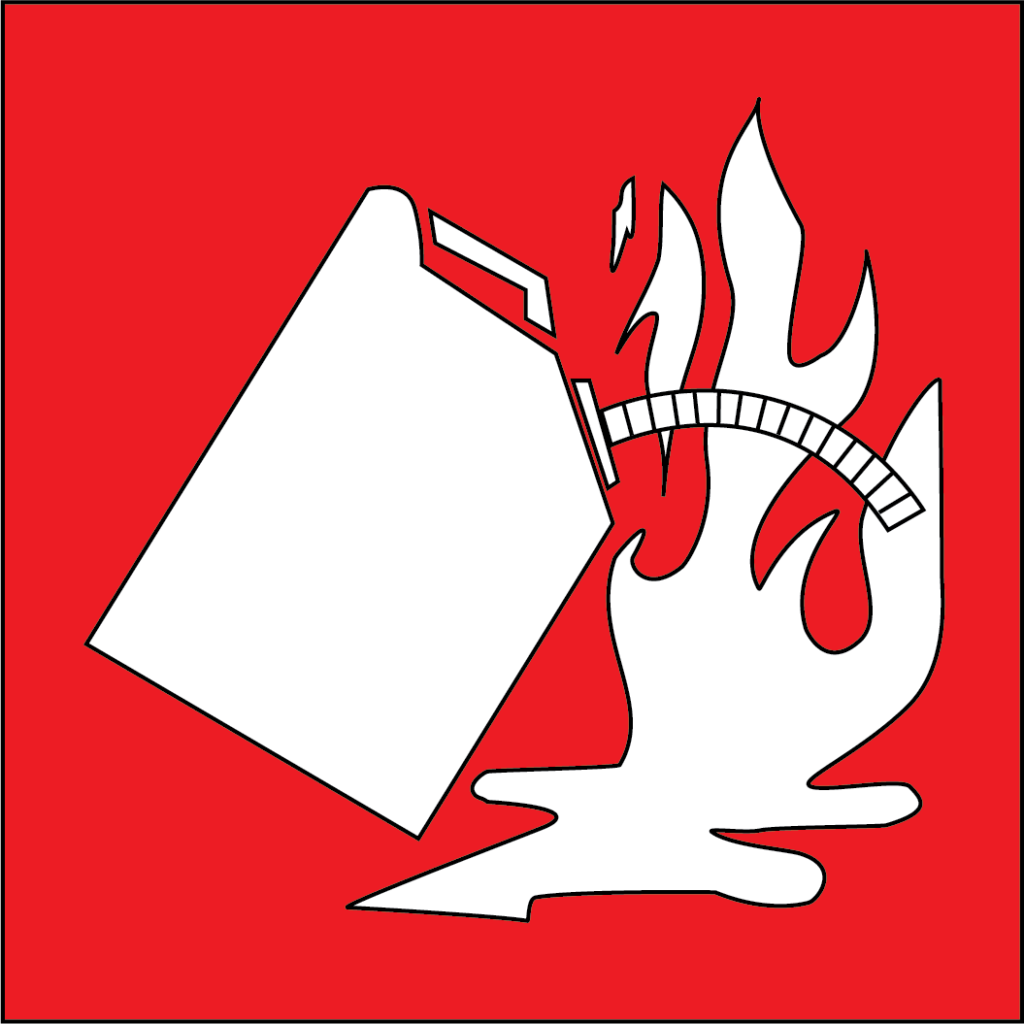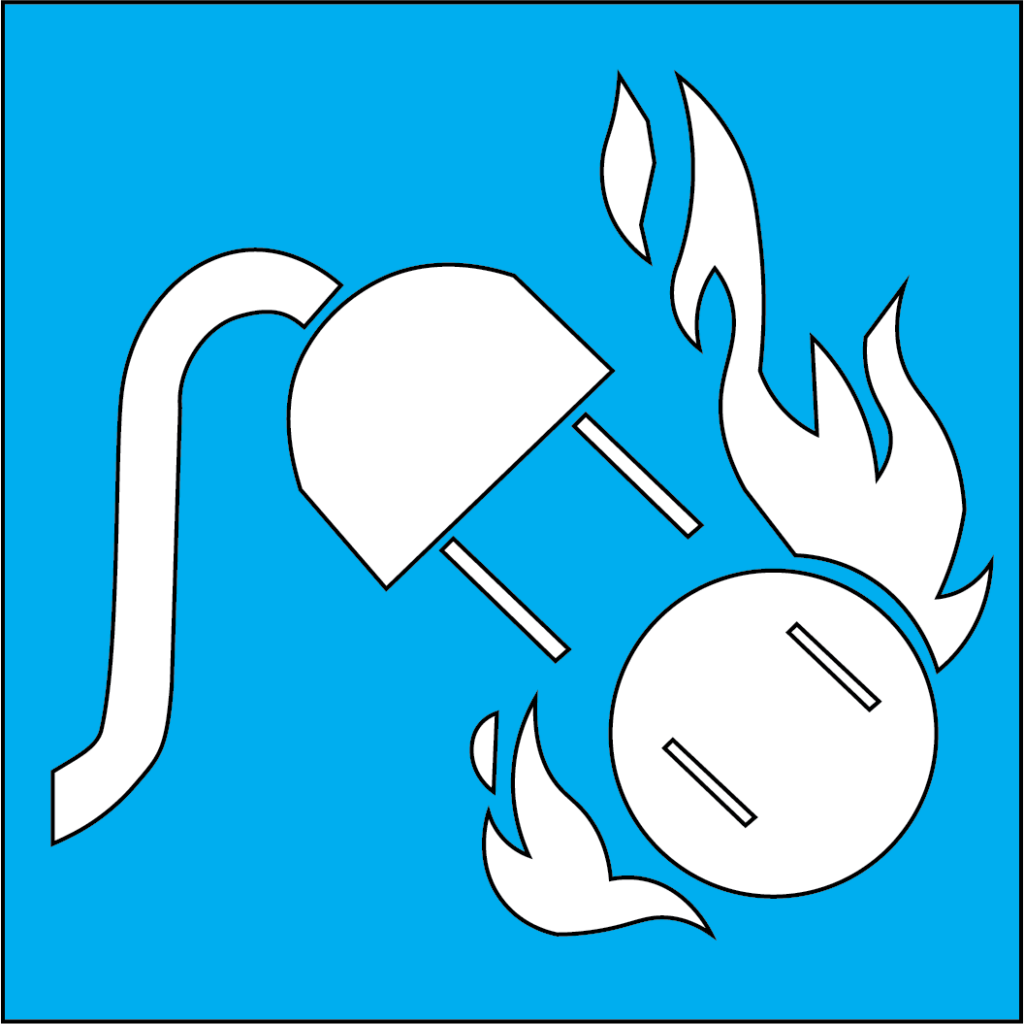Halotron® I
Product Testing
Underwriters Laboratories Inc. (UL) Listings in Portable Fire Extinguishers Offered by Multiple OEMs
Since 1995, AMPAC has supported multiple OEMs to achieve UL Listings in Halotron® I containing fire extiguishers where such testing was in compliance with UL 711/1093/2129. Halotron® I extinguishers have been Listed with the following Classes:


Class A:
Fires in ordinary combustibles such as wood, cloth, paper, rubber and many plastics.

Class B:
Fires in flammable liquids, oils, greases, tars, oil-base paints, lacquers and flammable gases.

Class C:
Fires that involve energized electrical equipment.
The following are current UL listings. Please contact Amerex Corporation or Buckeye Fire Equipment Company for more information.
| UL RATING | Halotron® I Amount/Nozzle Type |
| 1-B:C (Amerex only) | 1.4 lb. (0.64 kg) fixed nozzle |
| 2-B:C | 2.5 lb (1.13 kg), fixed and hose nozzles |
| 5-B:C | 5.0 lb (2.27 kg) fixed nozzle |
| 5-B:C | 5.5 lb (2.5 kg) hose nozzle |
| 1-A:10-B:C | 11 lb (5 kg), hose nozzle |
| 2-A:10-B:C | 15.5 lb (7 kg), hose nozzle |
| 4-A:60-B:C | 65 lb (29.5 kg), wheeled, hose nozzle |
| 4-A:80-B:C | 65 lb (29.5 kg), wheeled, hose nozzle |
| 10-A:120-B:C | 150 lb (68 kg), wheeled, hose nozzle |
U.S. Federal Aviation Administration (FAA) Test Program for Airport Firefighting
The test legacy of Halotron® I includes a highly successful full-scale evaluation sponsored by the FAA at Tyndall Air Force Base, Florida, in 1993 and 1994. The program was designed to measure the firefighting performance of Halotron® I relative to halon 1211, and included active participation by the U.S. Air Force. The tests included three-dimensional running fuel fires, jet wheel brake fires, pool fires and agent throw-range fires, which are summarized below.
Dry Pool Fire Extinguishment Test
JP-4 jet fuel was poured directly onto a large concrete surface (up to 800 square feet or 74.3 square meters) and ignited. This test was designed to resemble real-world aircraft flight line spill fires where fuel falls directly onto a concrete surface.
Three Dimensional Inclined Plane Test
In this test, JP-4 fuel was poured down a 20 ft (6.1 m) long, 5 ft (1.5 m) wide ramp into a 4 ft (1.2 m) by 8 ft (2.4 m) steel catch basin, which was then ignited. This simulated the common situation where fuel flows from a ruptured tank down a sloping surface, such as an aircraft wing.
Simulated Engine Nacelle Running Fuel Fire Test
This test simulated a fire in the afterburner end of a simulated F-100 jet engine. JP-4 jet fuel was allowed to run through the 8.3 ft (2.5 m) high-by-16 ft (5 m) long test article onto a concrete surface below and then ignited. The fuel source was continuous throughout the test.
Simulated Wheel Brake Fire Involving Hydraulic Fluid
This test was designed to simulate a hot wheel brake hydraulic fluid fire. It consisted of an F-4 aircraft tire and magnesium rim mounted on a stand with a steel pan underneath. Flammable hydraulic fluid was poured over the tire and rim into the pan and then ignited.
Agent Throw Range Tests
This test attempted to measure the effective throw range of agents through use of a stationary nozzle positioned over an array of small steel pans, at various elevations, which contained fuel that was ignited.
All tests were conducted with a wheeled 150 lb (68 kg) halon 1211 type fire extinguisher at a U.S. Air Force Base in Florida, U.S. In addition, a 500 lb (227 kg) unit, of the same type used on aircraft rescue and firefighting (ARFF) vehicles, was used on some of the events in the latter stages of the test program. This FAA-sponsored series of tests was intended to simulate the types of fires encountered by aircraft flight line firefighting personnel.
U.S. FAA Approval for Airport Firefighting
Following the 1993-1994 test program, Halotron® I was approved for use in airport ramp firefighting by FAA CertAlert 95–03 (a copy of this CertAlert is available upon request) as a replacement for halon 1211 (BCF). The primary application for Halotron® I at commercial airports has been in aircraft rescue and firefighting (ARFF) vehicles. Halotron® I has been installed in ARFF vehicle systems at over 110 commercial airports in equipment from multiple major manufacturers including Pierce/Oshkosh, Rosenbauer and E-One since the 1995 approval.
U.S. FAA Approval for Onboard Aircraft Use
One Halotron® I portable extinguisher is approved by the FAA and Underwriters Laboratories, Inc. (UL) for onboard aircraft use. This is in compliance with DOT/FAA/AR-01/37, Development of a Minimum Performance Standard for Hand-Held Fire Extinguishers as a Replacement for Halon 1211 on Civilian Transport Category Aircraft. This standard specifies a minimum 5-B:C UL rating or equivalent, passing the seat fire toxicity test and passing the hidden fire test (measuring total flooding capability). The FAA onboard approval is based on a combination of agent and hardware. Currently, the Amerex model B394TS is the only approved Halotron® I containing hardware for this application.
UL Component Recognition
Halotron® I is component recognized by UL in the Clean Agents for Fire Extinguishers and Extinguishing System Units category. The file number is EX5107 (N).
U.S. Coast Guard Approval
Halotron I is approved by the U.S. Coast Guard. UL-listed portables that comply with performance and hardware test requirements are authorized to be marked “Marine Type, USCG Approved.” The following minimum agent weights and categories apply:
- Type B, Size I Minimum 5 lb (2.27 kg)
- Type B, Size II Minimum 15 lb (6.8 kg)
NFPA 10 – Standard for Portable Fire Extinguishers
Halotron® I is incorporated into NFPA 10 (“Standard for Portable Fire Extinguishers”). Since 1998, editions of this standard define ”Halogenated Agents“ to include “Halocarbons,” and this includes HCFC-based agents (Halotron® I).
American Society for Testing and Materials (ASTM)
Halotron® I (HCFC Blend B) specification and handling standards are available through ASTM (www.astm.org). See ASTM D7123, Standard Practice for Handling, Transportation, and Storage of HCFC Blend B and ASTM D7122, Standard Specification for HCFC Blend B.
Product Approvals and Standard Recognition
U.S. Coast Guard Approval
Halotron® I is approved by the U.S. Coast Guard. UL-listed portables that comply with performance and hardware test requirements are authorized to be marked “Marine Type, USCG Approved.” The following minimum agent weights and categories apply:
- Type B, Size I Minimum 5 lb (2.27 kg)
- Type B, Size II Minimum 15 lb (6.8 kg)
NFPA 10 – Standard for Portable Fire Extinguishers
Halotron® I is incorporated into NFPA 10 (“Standard for Portable Fire Extinguishers”). Since 1998, editions of this standard define ”Halogenated Agents“ to include “Halocarbons,” and this includes HCFC-based agents (Halotron® I).
U.S. EPA Significant New Alternatives Policy (SNAP)
Since March 1994, listed as an acceptable substitute for severe ODS (halon 1211) in non-residentlal applications. The SNAP Rule implements elements of the Clean Air Act Amendments of 1990.
Contact Us
To obtain more documents, or if you have any questions about Halotron® I

